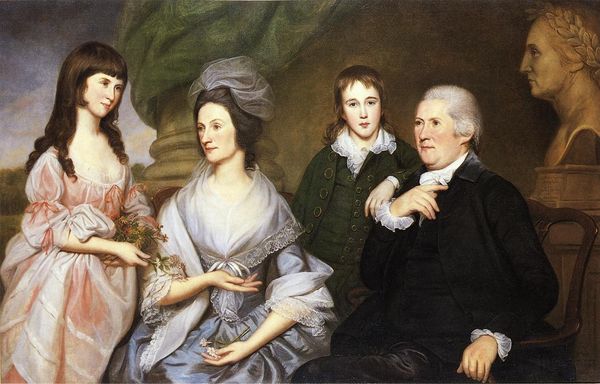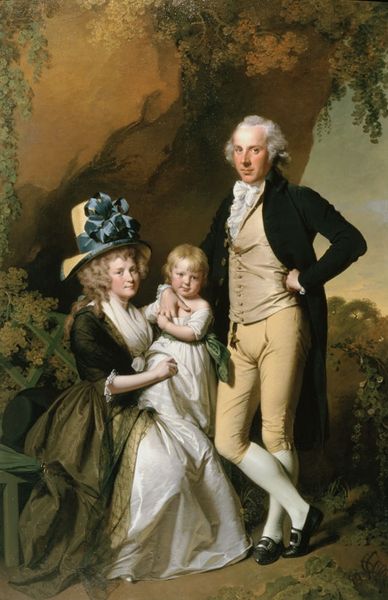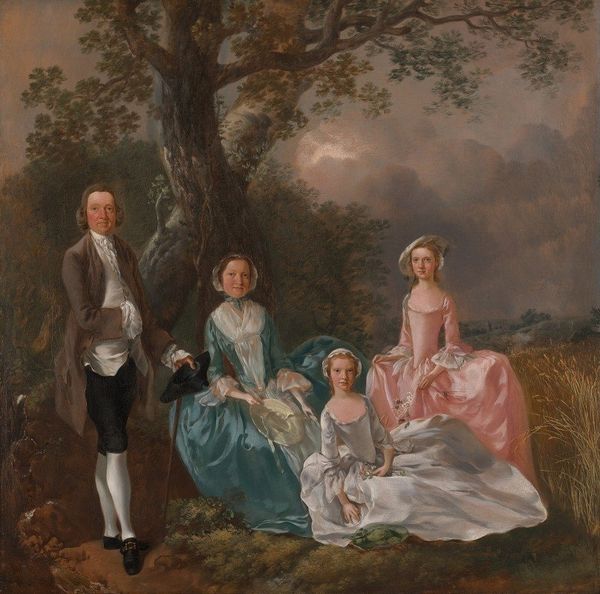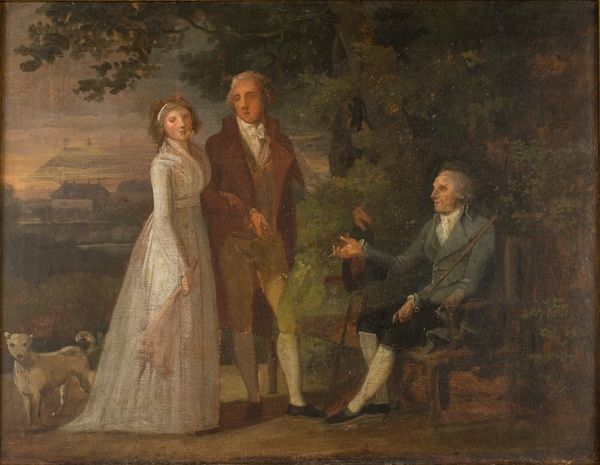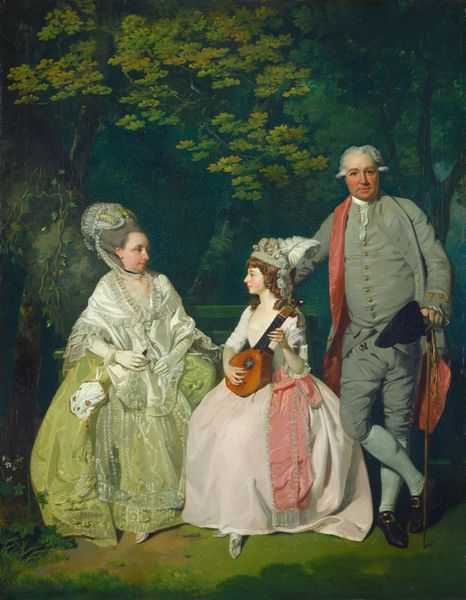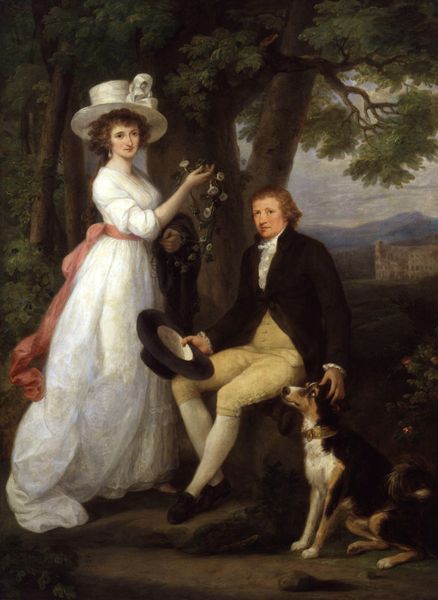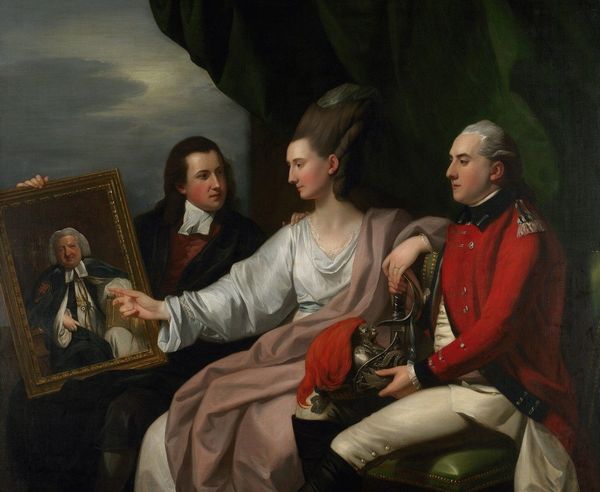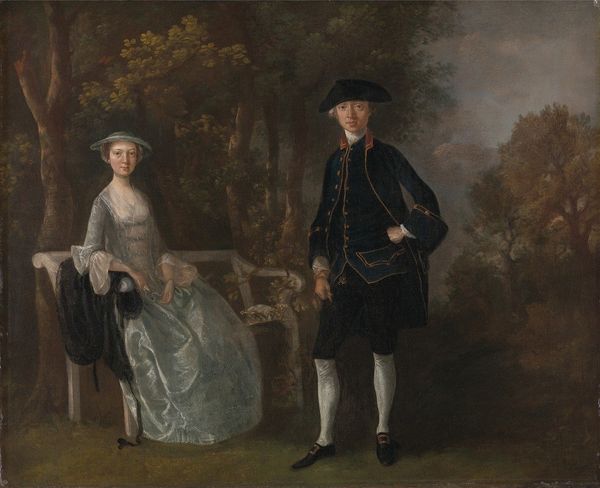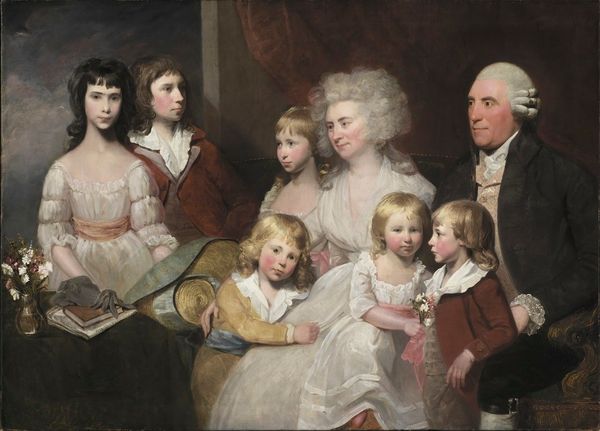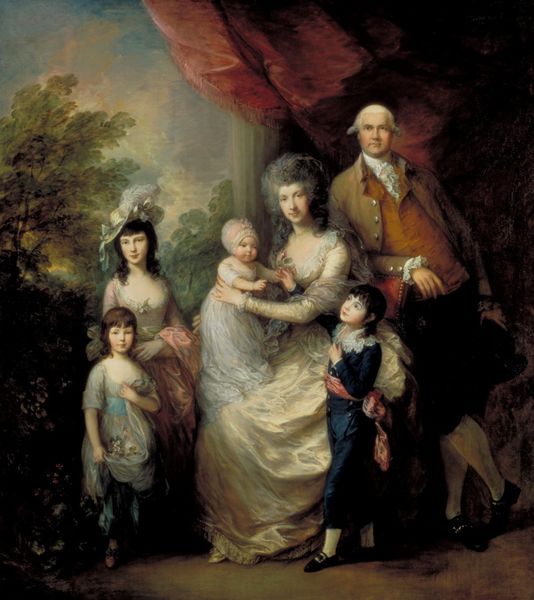
painting, oil-paint
#
portrait
#
figurative
#
painting
#
oil-paint
#
romanticism
#
genre-painting
Copyright: Public Domain: Artvee
Editor: So this is Henry Raeburn's "John Johnstone, Betty Johnstone and Miss Wedderburn", painted around 1790-1795. It looks like an oil painting, and I find the mood a bit... stiff? It’s a family grouping, but there isn’t a lot of warmth. What do you make of it? Curator: That 'stiffness,' as you call it, is quite telling. Consider the social dynamics at play. Portraiture during this period served to reinforce class structures and gender roles. Raeburn, painting in Scotland, captured the gentry and their aspirations. Look closely: who holds the book? Who’s posture indicates authority? Who’s is in an obviously feminized presentation? Editor: Betty Johnstone, the older woman, holds the book, almost like a symbol of knowledge or status. John, the man, appears to be occupying more space, seems a bit more assertive, and Miss Wedderburn appears, with all the white, as an object. It is like they represent something together. Is it fair to say that Raeburn's composition tells a story about their positions? Curator: Absolutely. The composition isn’t merely aesthetic; it’s a carefully constructed narrative of power. Consider also the implications of who commissioned the work. Whose gaze are they returning? Are they seeing out to future power or simply marking the position they held when alive. Editor: The painting then becomes a record of gender and class, beyond just being a portrait. It becomes social commentary of the time? Curator: Precisely. We're not just looking at faces, but at the visual manifestation of social hierarchies and gendered expectations in late 18th-century Scotland. We need to think how a painting such as this reinforces certain cultural norms and excludes other identities from visibility. It’s a snapshot of a specific societal framework. Editor: I hadn’t considered it that way before, viewing a family portrait as a statement on social standings. I’ll definitely look at paintings differently now! Curator: That’s the power of engaging with art through a critical lens. It opens up whole new avenues for understanding the past and its connection to our present.
Comments
No comments
Be the first to comment and join the conversation on the ultimate creative platform.

